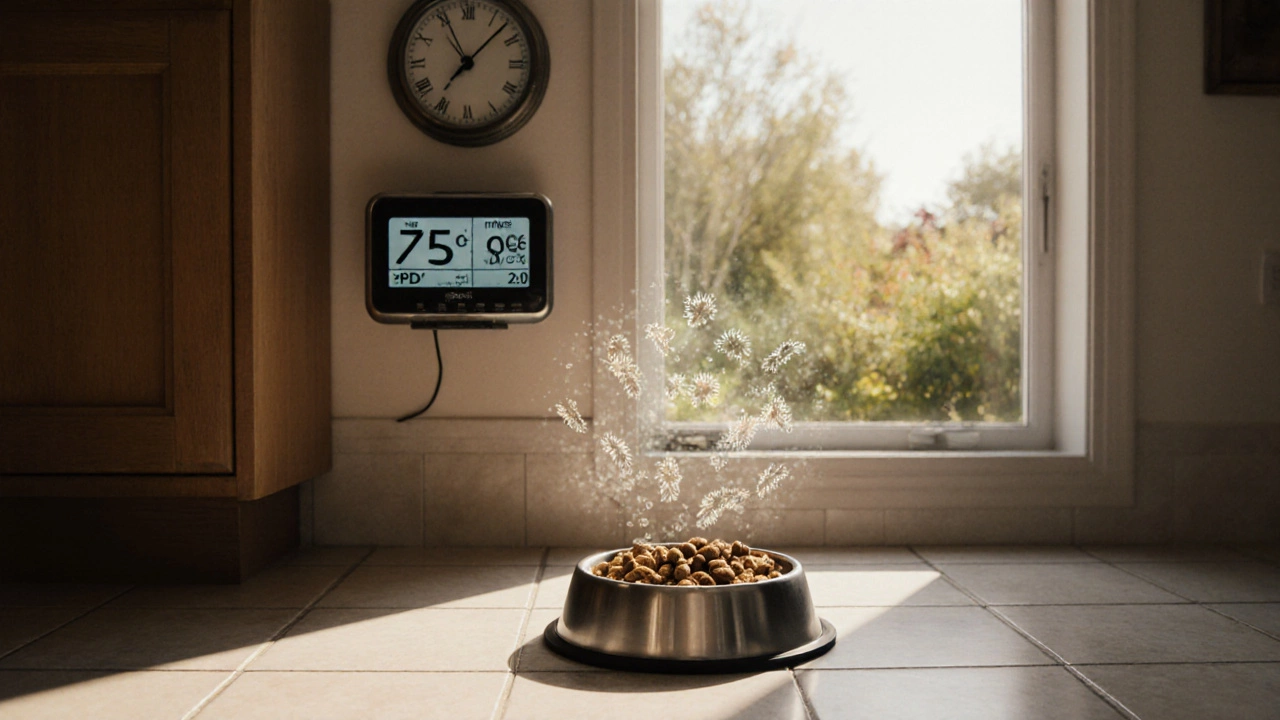Dog Food Spoilage: How to Spot, Store, and Safeguard Your Pup
When dealing with dog food spoilage, the deterioration of pet meals caused by microbes, oxidation, or improper handling. Also known as food rot for dogs, it can turn a nutritious bowl into a health hazard. This issue dog food spoilage encompasses bacterial contamination, the growth of harmful microbes like Salmonella or E. coli, which thrives when food is left exposed to heat, moisture, or air. It also relates closely to dog food freshness, a measure of how recently the food was packaged and whether its nutrients remain intact. The simple act of proper storage, keeping kibble in airtight containers away from sunlight and humidity can dramatically reduce the chance of spoilage. In short, a spoiled batch can lead to digestive upset, loss of appetite, or even serious illness, so knowing the signs and preventive steps is essential for any dog owner.
Spotting the Signs and Understanding the Risks
First off, your nose can be a powerful detector. A sour, rancid, or off‑putting smell usually means the fats in the kibble have oxidized – a classic sign of spoilage. Visually, look for clumped pieces, discoloration, or any mold growth; these are clear red flags. When dogs eat spoiled food, they might vomit, have loose stools, or show signs of lethargy. In more severe cases, bacterial toxins can cause fever, dehydration, or chronic gastrointestinal issues. The relationship here is straightforward: dog food spoilage leads to health problems, which in turn can increase vet visits and costs. Understanding this chain helps you prioritize regular checks of expiration dates and storage conditions, especially for bulk purchases that sit on shelves for months.
Prevention is easier than cure. Store dry kibble in a sealed, food‑grade container and keep it in a cool, dry pantry – avoid the garage where temperature swings are common. If you buy large bags, consider splitting them: keep a smaller portion out for daily use and seal the rest tightly. For wet food, always refrigerate opened cans within two hours and use a clean spoon each time to avoid cross‑contamination. When traveling, pack food in insulated bags with ice packs to maintain a stable temperature. Remember, proper storage not only preserves freshness but also blocks the conditions bacteria need to multiply. By treating your dog’s diet with the same care you would your own meals, you lower the risk of spoilage and protect your pet’s wellbeing.
Below you’ll find a curated set of articles that dive deeper into each of these points, from spotting expired kibble to safe storage methods and handling health concerns caused by spoiled food.
Posted By Bryndle Redding On 22 Oct 2025 Comments (0)
Can You Leave Dry Dog Food Out All Day? Safety & Shelf‑Life Guide
Learn if leaving dry dog food out all day is safe, how temperature and humidity affect kibble, and get practical tips to keep your dog's meals fresh and healthy.
READ MORE